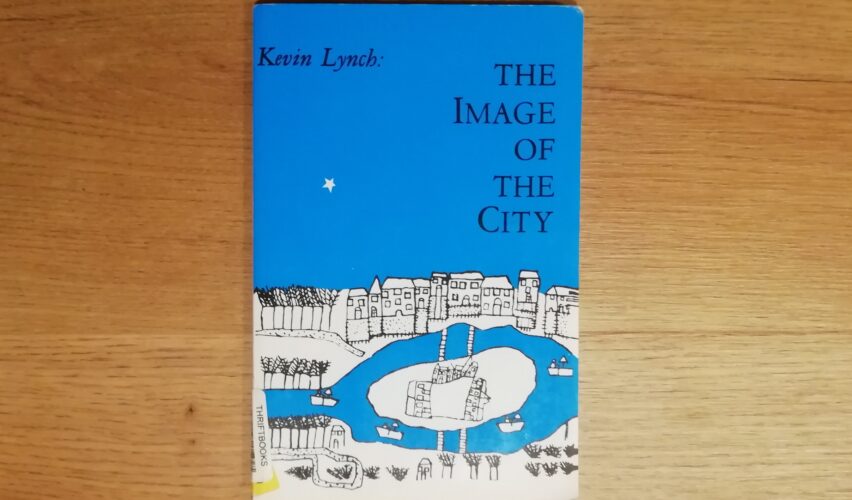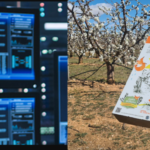Kevin Lynch’s “The Image of the City” is a seminal work in urban design that founded in practice a new field of work and study such as the geography of perception -or behavioural geography-. In his work, Kevin Lynch tries to comprehend and design the visible layer of the city through the image it projects in our brain. Lynch’s approach, method and results turned “The Image of The City” into one of the most influential texts in the discipline of urban design published to date.
Lynch’s psychological focus opened up a new perspective in urban planning: that of designing the city through the psychology of its inhabitants, as opposed to the idea that the city could rather be the product of a top-down process.
That top-down approach to urban planning found fertile ground during the dark age of totalitarism governments in the first decades of the 20th century. It worked for a clear purpose: making urban life a miserable and monotonous succession of metro-boulot-dodo.
A third way
But Lynch’s approach also didn’t quite fit with the opposite perspective, the one championed by intellectuals like Lefebvre and the situationists during the decades after World War II. According to these the city should be designed to foster our most libertarian desires, so that the urban landscape would provide us with a continuous carousel of liberating moments or situations. Kevin Lynch’s “The Image of the City” is a work low on ideological decibels. For Lynch, a city designed to help us know where we are and where we are going, without fear of getting lost and with a sense of security, is already a big progress.
Lynch’s work dates from 1960. This was the time when the situationists began to abandon the promising path that their first research in psychogeography and unitary urbanism had opened for the incorporation of psychology into urbanism. If the former would study the effects of the urban environment on the emotions of the individual, the latter was destined to surpass any of the architectural and artistic disciplines in pursuit of a city that would be, in itself, a collective work of art. A work of art in which we would live an exclusively emotional life.
Unlike the situationists, who tried to draw the sentimental map of the city according to their own interpretation, Lynch tries to draw the mental map of the average citizen. Getting that image from the brains of those citizens onto paper, Lynch reasons, is the first step in measuring the success or failure of the landscape designer, the urban planner, and the architect. Because Lynch argues that, just as orientation (in the jungle, in the desert, in the sea) is one of the basic skills of survival, an urban landscape that offers adequate spatial orientation will favor the vitality of public space.
Qualities of urban image
For a city to configure in our brain a coherent image it must:
- be “legible”, facilitating the inhabitant or visitor the basic understanding of its structure. Paris is an example of a legible city, enclosed in a belt like the Bulevard Periferique, with the Seine meandering through its middle, and a main landmark like the Eiffel Tower that acts as a great lighthouse that guides us wherever we are. Alongside the Eiffel Tower, there are other secondary landmarks that help us to always know where we are: the Sacre Coeur to the north, the Tour Montparnasse, or La Defènse as a boundary in the west.
- possess a structure, convey an identity and a meaning
- be evocative
- transmit a certain sense of imperfection, of being unfinished, so that we feel we can still have an active or constructive role in it
- be safe, something that obviously leads us to consider Tonucci’s “The city of children”: a safe city is one in which we see children playing in the street.
To achieve these qualities Lynch proposes to break down the city into “fundamental blocks or elements”.
The 5 elements of the mental map of the city
The image of the city, according to Kevin Lynch, depends on the combination, relationships and qualities of 5 constituent elements: nodes, roads, edges, districts and landmarks.
- Landmarks are those reference points that one can remember with closed eyes and that any child would draw on a map of his city or neighborhood.
- Districts are the urban ensembles endowed with a certain homogeneity or characteristic quality (it can be the typology of buildings, its port character, or the configuration of its squares).
- Edges are the perceived limits of the districts (the beach, a railway line, a major avenue). Nodes are those points where we have to make decisions: crossroads, traffic circles, or squares.
- Finally, the paths are the ways to move from one node to the next.
Of these 5 elements, nodes and paths are particularly interesting in our research journey, during which we have set out to discover how urban data can help us to design higher quality and more sustainable public spaces and services.
Nodes as generators of architecture
We are interested in nodes because of their potential to generate architecture. This potential can be argued in several ways. For example, Castells already anticipated in his vision of the “space of flows” that an architecture of the end of the millennium had been generated around the great nodes of exchange of flows (be they flows of people, goods, information, capital, etc.), exemplified in the new high-speed train stations, airports, or in the financial districts of vertical architecture.
Michael Batty, from his vision of the “syntax of space” argues that, if the city is a superposition of networks (transport, sanitation, social, etc.), it is at the points of exchange (nodes) that architecture is produced. Thus, the construction of a market would be the architectural consequence of the existence of a place suitable for commercial exchange.
Although the other way around also works, it may be that the commercial activity (the flow) is the consequence of the construction of the market. (Jan Gehl would tell us that the latter is much less efficient. It is more worthwhile to look first at where life naturally occurs in the city. Then, we will design the public space that best favors that activity and, finally, we will construct the buildings. A method as reasonable as it is not very widespread).
Energy, thermodynamics and intelligence
In our research, we want to bring an additional prism to the importance of nodes in the design of services, infrastructures and public spaces. According to the second Law of Thermodynamics, the entropy or disorder of a system always increases with time.
Under this prism, nodes are the place where flows (of information, goods, people) are disordered and rearranged. And any reduction of entropy in a part of the system requires the application of energy, energy that heats the system as a whole, as happens in a refrigerator. In a refrigerator, the cold serves to stop the proliferation of bacteria and fungi in the food contained inside, at the cost of heating the room and accelerating the metabolism of bacteria and mites in and around the back of the room. In this article we develop this thermodynamic hypothesis of the production of architecture to host life around the nodes.
For now, we are left with Kevin Lynch’s own argument: it is at the nodes or intersections where we make decisions, that is, where we apply “intelligence.” We stop, we think, we cross paths with other people, perhaps we meet someone we know who has come on another subway line. All this invites us to make the nodes better places: determining their limits, placing a reference point, making the node transmit the identity of the place, or designing its appearance to indicate the directions to take (avoiding, for example, the feeling of disorientation that we have when leaving certain subway stations to the surface).
Designing the paths
We are also interested in street design because good streets mean lively neighborhoods. According to Kevin Lynch, a street becomes a real path if it is suitable for pedestrians to walk along at ease, if it has a clear sense of direction, or if it is endowed with character; for example, by the concentration of a distinctive type of commercial activity, or a special type of paving or facade.
Turning streets into paths can also be achieved through environmental conditions. Lynch proposes using lighting, a technique that the new open-air shopping centers use in a really sophisticated way. As they also use sound (through music, or the murmur of water). In fact, if you walk through a shopping mall of a company like Intu you can find many of these qualities. The result creates in the visitor a comforting sensation that translates into a positive predisposition for consumption.
Taking a walk through this type of open-air shopping mall, we can see how they fulfill the qualities that Kevin Lynch establishes for a quality public space. We know at all times where we are, where we are going, we are at ease and the place transmits a totally legible narrative. The situationists themselves could not have done better. Quoting them, how bitter their victory when the psychogeographic techniques they advocated in the 1950s for the liberation of man are used today to promote consumerism.
Critique of the method
Kevin Lynch proposes the following method for drawing this collective mental map of the city:
- Select a group of people
- Ask them to draw a map of their city with the main elements they remember.
- Interview them about the most significant places for them.
- Exercise of recognition and geographic positioning of certain characteristic images of the city.
- Tour of specific areas to work on specific aspects of the map, with the accompaniment of experts.
Lynch himself recognizes the limitations of the method. The main one is the difficulty that for many people is the mere fact of drawing what is in their head, of faithfully transferring to paper the inner image of the city. But also the problem of selecting a sufficiently large group so that the different socio-demographic groups are correctly represented in the sample. There is another obstacle more of a psychological nature, and it has to do with the difference between the image we remember when we are asked to draw the map and the image we use to make inmediate decisions, for example, when we have to decide which direction to take at an intersection.
We have many more elements of the city in our heads than we remember, so that map we draw about what we remember will always be a small subset of the many things we know about the city.
And finally, Lynch points to a fourth problem. In his view, the method fails to capture well the interrelationships between elements of the city, nor the changes in the image of the city over time (the maps produced are static).
Future lines of work
In the final pages of “The Image of the City,” Kevin Lynch lays out a roadmap for moving beyond his own work. Aside from validating his ideas through actual urban design projects, he was concerned with the question of developing a technique for representing the city over time. He also recognized the problem of extending the sample of individuals because of its direct implications for the cost of the study. And, if we were to dream, he wanted to find a way to capture the collective image of the city and its fluctuations without having to repeat the arduous experiment each time.
Today, we are beginning to see how some of these problems that seemed beyond the reach of the urban designer in 1960 can finally be addressed.
For example, the visualization of data captured by urban infrastructures makes it possible to represent certain layers of the city over time, revealing hidden aspects of our urban ecosystems. Sentiment analysis techniques, which analyze how citizens feel about their city through data displayed on social networks, partially help to draw a collective mental map of our cities. The interrelationships between elements are also beginning to be visible thanks to data from our cell phones and geo-location technologies.
Big data and Artificial Intelligence
However, the use of all these technologies and techniques in pursuit of better urban design is still in its infancy. Technologists (who know how to collect data) are not connected to urban planners (who are responsible for changing the shape of our city). And urban planners work with models and are just beginning to practice data science.
Lynch’s hypotheses today could be modeled, for example, by artificial intelligence systems trained with data collected in real time that would warn us of areas of the city that work and those that don’t work. This would allow us, for example, to make better-informed decisions about potential interventions in public space, and to measure their effect in near real time.
There are so many possibilities that technology opens up that we think it is time to recover Kevin Lynch and remember the ultimate goal of “The Image of the City”: to contribute to making the city make us feel at home. Comfortable, safe, and important.
This article is published under a Creative Commons license. Some rights reserved.















